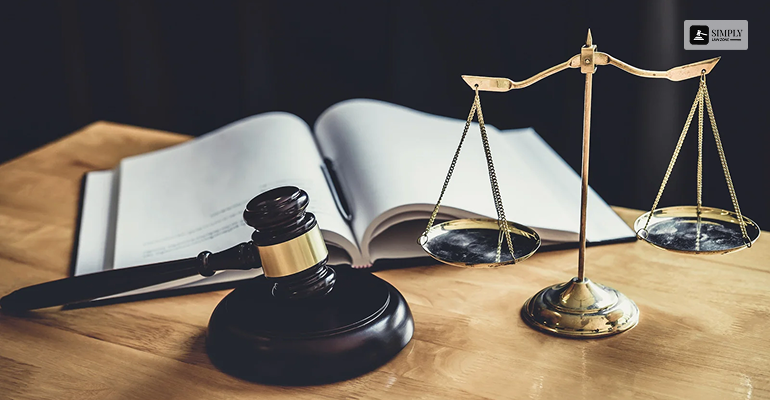
The doctrine of selective incorporation plays a very important role in the landscape of American constitutional law. Especially when it comes to ensuring that fundamental freedoms are uniformly protected across all states, not just at the federal level.
As a mechanism, it has transformed the Bill of Rights from a set of federal restrictions into a nationwide standard of justice by applying key provisions to state government actions.
In this article, I will explain the following things:
- The meaning of selective incorporation
- What are the judicial mechanics of selective incorporation?
- What is the significance?
Additionally, I will also explain how it compares to the alternative theory of total incorporation. So, if these are some of the things that you want to know, keep on reading this blog till the end…
What Is Selective Incorporation?
Selective incorporation is a constitutional doctrine entailing the case-by-case application of certain rights in the Bill of Rights to the states through the Due Process Clause of the Fourteenth Amendment.
According to the Legal Information Institute, “the Court asks whether the right at issue is “both ‘fundamental to our scheme of ordered liberty’ and ‘deeply rooted in this Nation’s history and tradition.”
In other words, it focuses only on those rights considered “fundamental to ordered liberty” or “implicit in the concept of ordered liberty.” In essence, not all amendments are extended; only those that the Supreme Court sees as essential for fairness and justice.
Legally, Merriam-Webster defines it succinctly as “a theory … that those rights guaranteed by the first eight amendments … that are fundamental … are incorporated into the Fourteenth Amendment’s due process clause.” Similarly, Justice notes it ensures certain fundamental rights “are protected under the Fourteenth Amendment.”
What Is The History Of Selective Incorporation?
At the time of the Bill of Rights ratification in 1791, these rights were valid only for the federal government – they did not limit the powers of state governments. The decision in Barron v. Baltimore (1833) was the point of reference to define this restriction.
Practically, the Congress and the Supreme Court did not acknowledge the federal restrictions until the Civil War and the ratification of the Fourteenth Amendment in 1868. These included the Due Process Clause and allowed incorporation to happen.
With Gitlow v. New York (1925), selective incorporation was legally and practically the first case where the Supreme Court decided that free speech from the First Amendment was binding on the states. However, at the same time, it allowed the states to regulate speech under very limited circumstances.
Subsequent decades, especially under the Warren Court (1953–1969), saw the rapid expansion of incorporated rights. For instance, notable cases include:
- Gideon v. Wainwright (1963): right to counsel.
- Miranda v. Arizona (1966): rights against self-incrimination (Fifth Amendment).
- Duncan v. Louisiana (1968): right to jury trial in criminal cases.
- Mapp v. Ohio (1961): Fourth Amendment’s exclusionary rule.
Additionally, earlier, Palko v. Connecticut (1937) held that double jeopardy was not fundamental enough to incorporate, reflecting the selective nature of the doctrine.
These cases clearly show how selective incorporation developed over time. However, this evolution was always through a measured, case-by-case judicial process.
What Are The Key Aspects Of Selective Incorporation?
When it comes to the key features or aspects that define the selective incorporation, some of the major ones include the following:
- Due Process Clause as Vehicle: Firstly, the Fourteenth Amendment’s Due Process Clause (“no state shall … deprive any person of life, liberty, or property, without due process of law”) is the basis for applying federal rights to the states.
- Case-by-Case Evaluation: Rights are incorporated gradually, assessing whether each right is “fundamental” before applying it to the states.
- Fundamental Rights Criterion: Incorporated rights are those that are essential to “ordered liberty,” such as free speech, fair criminal process, reasonable searches, etc..
- Not All Rights Incorporated: Some parts—like certain procedural rights, the Third Amendment, or jury rights in civil cases—have never been incorporated.
- Judicial Discretion: Finally, the Supreme Court plays an ongoing role, examining and deciding which rights merit incorporation—a process that continues to evolve.
Why Does Selective Incorporation Matter?
Selective incorporation ensures that individual liberties are uniformly protected across all states. This prevents a fragmented patchwork where one state may deny fundamental rights that another protects.
According to Legal Clarity, this has “increased federal judicial oversight, particularly by the Supreme Court, over state laws and actions. This ensures state governments comply with incorporated rights, limiting state autonomy. Federal courts can invalidate state statutes or practices violating these rights.”
In other words, by elevating rights such as free speech or due process through nationwide standards, the doctrine also expanded federal judicial oversight over state laws. Essentially, it has helped in balancing power between state and federal authority.
This process fundamentally shaped American civil rights. Additionally, it contributed to a broader judicial enforcement of equality and procedural fairness long before modern civil rights movements took center stage.
How Does Selective Incorporation Work?
“Selective incorporation comes up when states pass amendments or policies that are alleged to infringe on Bill of Rights protections,” as stated by LegalZoom.
According to a Reddit thread, “in Gideon v Wainwright it was established that all people needed to be provided an attorney if they can not afford one. So, this was selectively incorporated into the states, and now all states need to provide an attorney if a person can not afford one. “
Here’s how it works:
- Case Arises: A state law or action is challenged as infringing a right protected by the Bill of Rights.
- Judicial Review: The Supreme Court examines whether the challenged right is “fundamental.”
- Due Process Clause Application: If it is fundamental, the Court holds that it’s incorporated via the Fourteenth Amendment and applies to states.
- State Law Adjusts or Invalidates: The law or action may be struck down or modified to comply.
Example: Some of the notable examples or cases where we can see how the doctrine of Selective Incorporation worked include:
- Gitlow v. New York (1925): Free speech was incorporated.
- Mapp v. Ohio (1961): The Fourth Amendment’s exclusionary rule was applied to states.
- Palko v. Connecticut (1937): Double jeopardy was not incorporated since it wasn’t deemed fundamental.
The process or the steps that I have mentioned above is literally at the of selective incorporation’s judicial implementation.
Selective Incorporation Vs Total Incorporation: Which One Is Better?
Total Incorporation argues that the entire Bill of Rights should automatically apply to the states. Justice Hugo Black was a major proponent, considering the Fourteenth Amendment as requiring full application of all federal rights.
Selective Incorporation, in contrast, applies rights individually only if deemed fundamental—allowing judicial discretion and gradual expansion.
At A Glance: Comparative Advantages Between Selective Incorporation Vs Total Incorporation
- Total Incorporation offers simplicity and uniformity. Hence, all rights apply immediately, ensuring consistency.
- Selective Incorporation offers flexibility. It enables courts to evaluate the relevance and universality of rights, thereby preventing overreach and respecting federalism.
The Supreme Court has practically been backing selective incorporation. This was aimed at finding a middle ground between the protection of essential liberties and the rights of the state.
Hence, selective incorporation directs the most important federal civil liberties through the Fourteenth Amendment to be binding on state governments. Thus, has changed the very fabric of American constitutional law.
Due to its case-by-case nature, the courts have been able to define what “fundamental” rights mean carefully. As a result, it provides a more complex but also more effective protection.
Rather than a total incorporation scenario, which would provide a more appealing evenness, the successful establishment of the doctrine of selective incorporation in the latest jurisprudence has been ascribed to its pragmatic balancing of the individual rights, state autonomy, and judicial prudence.


